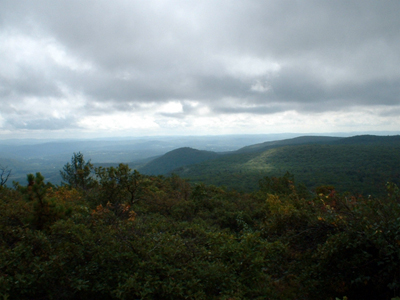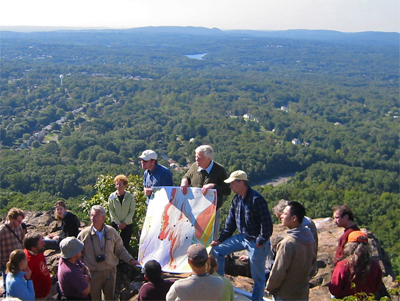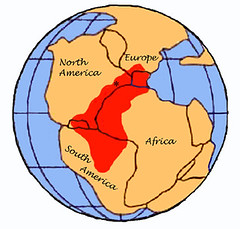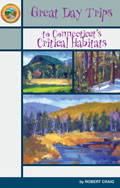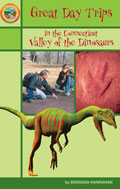First record of Eubrontes dinosaur footprint in Portland Quarry
Dinosaur footprints have been found in the Portland Brownstone Quarries for centuries, but until a few weeks ago one was strangely missing. It seemed odd that there was no record of the dinosaur footprint known as Eubrontes (or "true thunder") having been found in the quarries located along Brownstone Avenue. Elsewhere in the Connecticut Valley, the footprint is relatively common, one reason it was adopted as the official State Fossil by the Legislature in 1991.
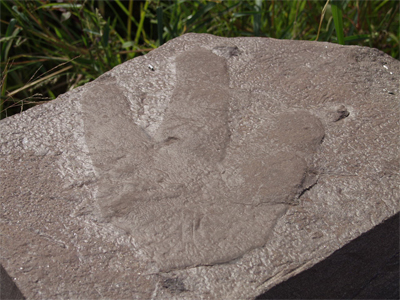
Quarryman Mike Meehan may now stake his claim for being the first to make a verifiable discovery of Eubrontes footprints in the Portland Quarries. A former coal mining engineer, Mike reopened operations in the north quarry to satisfy new demand for brownstone that has grown over the past several years. It's not uncommon for Mike and his quarrymen to encounter dinosaur footprints as they work.
Mike joined a group of geologists for a discussion about Early Jurassic dinosaur footprints during a visit the scientists made to his quarry earlier this month. "One that hasn't been found here is Eubrontes," said Professor Paul Olsen of Columbia University, describing the footprint, probably made by a mid-sized theropod dinosaur some 200 million years ago. "I've found them," Meehan said matter-of-factly. "I have a couple over here."
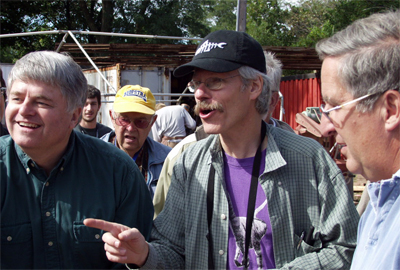
Geologist Nick McDonald (foreground left) and Professor Paul Olsen of Columbia University (foreground center) get a look at the first Eubrontes footprints known to have been found in the Portland Brownstone Quarries, with their discoverer, quarry operator Mike Meehan (foreground right).
Meehan led the group for a tour of several different footprints he's found in the quarry, including a couple of footprints that showed the classic three-toed foot design, roughly 18 inches from heel to toe, typical of Eubrontes (photos top and below).
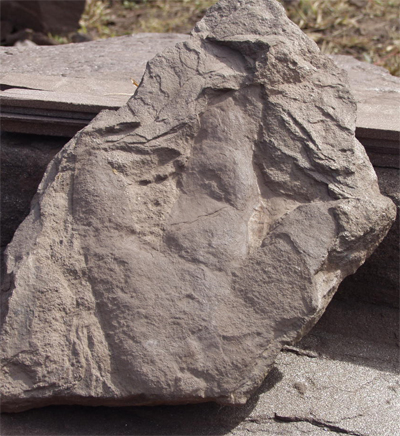
With his discovery, Meehan may have earned a place in the history of dinosaur science in Connecticut, along with quarrymen such as Charles O. Wolcott of Manchester, whose quarry yielded many prehistoric bone and trace fossils in the late 1800s.
